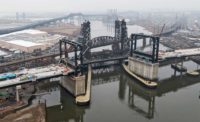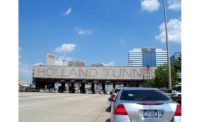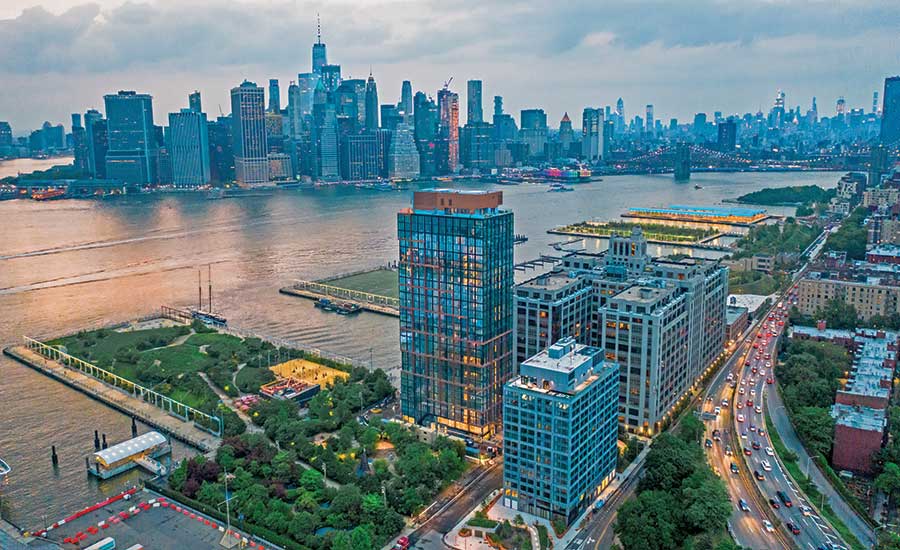New York, New Jersey Revenue for Top Builders Keeps Growing

Location is key for owners of multifamily residential projects, like Pier 6 at Brooklyn Bridge Park, says Suffolk’s Charlie Avolio.
PHOTO COURTESY SUFFOLK CONSTRUCTION

J.T. Magen is doing corporate interior fit-outs for Accenture, the National Hockey League and Skadden Arps Slate Meagher & Flom, all in 1 Manhattan West.
PHOTO BY ERIN DERBY PHOTOGRAPHY


It’s been a solid year for general contractors and construction managers in New York and New Jersey, with the 50 firms in the Top Contractors ranking reporting revenue of $27.42 billion in 2018, a 6.5% increase from the $25.75 billion that the 50 highest-ranking companies reported for 2017.
There were some surprises when looking at revenue figures for the top 10 firms in certain sectors. Revenue for firms working on religious and cultural projects rocketed 42.34% to $367 million, while those reporting work on green projects grew revenue an impressive 24.4% to $9.43 billion as more owners apparently believe that greener structures equal greener bottom lines.
“One trend we’ve been seeing in the market is an uptick in high-performance buildings, including toward LEED Gold and Platinum certification, smart buildings and passive house construction,” says Charlie Avolio, Suffolk Construction president and general manager, whose firm is at No. 24 on the main ranking, up from No. 37 last year. “Clients are increasingly prioritizing projects that are less likely to be affected by any legislative changes with regard to energy efficiency.”
Retail construction revenue rose 11.7% to $1.05 billion for the top 10 firms in the sector, with that market niche a core strength for J.T. Magen, says its president, Maurice Regan. The firm is building the Nordstrom flagship store in Manhattan, slated to open in October.
|
Related Link |
Regan, whose firm was ENR New York Contractor of the Year last year, says another construction focus has been corporate interiors. Overall revenue for the interior/tenant improvement sector in the region moved up 5.9% to $5.76 billion in 2018.
“The corporate interiors market’s … shift from private offices to open floor plans that incorporate smaller individual work spaces, huddle rooms, large common areas with pantries results in a smaller overall corporate footprint,” Regan says, which has generated lots of interior fit-out work. “We’re seeing this across all corporate sectors other than law firms.”
J.T. Magen, ranked at No. 7, is building interiors on more than half of the 67 floors in the Brookfield Properties tower 1 Manhattan West for three clients: Accenture, the National Hockey League and law firm Skadden Arps Slate Meagher & Flom.
Multi-unit residential sector work may be slowing—revenue fell about 1.5% to $4.71 billion for the top 10 firms in the sector—but there’s a caveat.
“We’ve started seeing [fewer] projects in the high-end, luxury condominium market. However, opportunities in that sector have been replaced with smaller, entry-level, boutique-size condominium projects,” Avolio says. “One trend with the smaller condo projects is that location is key for clients—a project can be scaled down to a more manageable size if it is in a solid location.”
A “solid location” in the New York and New Jersey region is usually located close to transportation. While that sector boosted results for this year’s Contractor of the Year, OHL Judlau, builder of numerous public projects including the L subway train’s Canarsie Tunnel overhaul, it fell for others, with overall regional revenue for the top 10 firms in the sector down 16.7% to $2.51 billion.
Dale Errico, vice president of business development at Railroad Construction Co., which rose to No. 39 on the main ranking from No. 51, may know one reason why.
“The New Jersey public sector is continuing to cool down until the agencies receive federal money for shovel-ready projects,” he says. This could also explain New Jersey state revenue falling 34% to $2.99 billion for the top 10 firms working in the state.
Overall revenue for work in New York state fared better, rising 6.2% to $15.35 billion for the top 10 firms. Challenges aren’t impeding the region’s construction industry overall, as seen by rising revenue in varied sectors, especially if firms are prepared.
Errico sees transportation still ripe with opportunity, particularly for design-build projects.
“As the contractor in the design-build partnership, we are pleased to see this trend take off,” he says. “It is to the benefit of the project owner when the designer and contractor collaborate from the start. What may seem achievable on paper isn’t always possible in the field. Having that knowledge in the beginning saves time and ultimately money.”
Railroad Construction’s current projects include the MTA Long Island Rail Road (LIRR) Mid-Suffolk Electric Yard design-build project in Ronkonkoma, N.Y. “This is one of many infrastructure improvement components supporting the full implementation of LIRR service to East Side Access,” Errico says, referring to projects that connect the railroad to Grand Central Station on Manhattan’s east side.
But Avolio cites new challenges in New York City projects. “It’s become harder to actually get the shovel in the ground as the demands of the New York City area have become more complex,” he says. “Suffolk has seen a number of opportunities in the pipeline, but there are a significant number of outside pressures.” Avolio says these include cost of land, limited availability of accessible sites, more logistically complex projects with larger client demands and zoning application hurdles “that have made it difficult to get projects started.”
He points to technology as a key market differentiator for Suffolk in the city. “It’s technology and the commitment of our teams that are helping us build incredibly complex projects in this difficult environment,” Avolio says.







